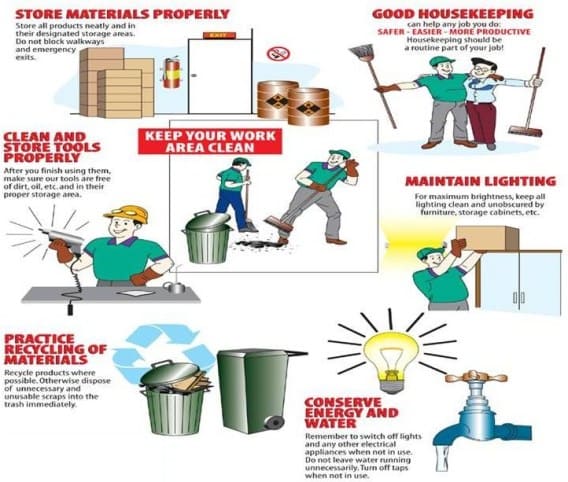Maintaining A Clean Job Site
Maintaining a neat and clean job site means different degrees of cleanliness and neatness to different people. What one person accepts as proper housekeeping may not be acceptable to someone else.
Clean job sites are influenced by two things: what we do or neglect to do and the weather.
We can control most conditions. Others we can be on the lookout for and guard against or remove. While we can't prevent bad conditions caused by the weather, we can often foresee them and plan the necessary action.
A general cleanup once a week won't guarantee safety on a construction site. You’ve seen jobs where it wasn't safe to turn around or even put your foot down without looking twice to be sure there wasn't something that might cause an accident.
A job like this is poorly-run, not only is it unsafe, it also makes for poor relations with the owner and the public. General safe practices. Keep trash and loose materials picked up and disposed of properly. Puts crap in its proper place. Secure materials to prevent shifting or rolling. Remove tripping hazards. Store materials so there is always a clean path around and between work areas and in and out of the job site. Do not place objects in ways of exits. Keep floor ladders, rungs and stainways dry and free from oil and grease. Put tools and equipment in areas where they belong. Do not store loose materials on scaffolds. Do not store more than one shift of material, such as block or brick on scaffolds. Storing materials safely. Store material for stable removal. Leave space for workers and equipment to load and unload store materials. Ensure the platform scaffold support has adequate strength for the weight of the material. Keep the height of store material over stability and line of sight. Store pipe and rods in building racks. Waste and scrap disposal. Clean scrap lumber with protruding nails from work areas, passageways and stairs in and around buildings or other structures. Remove combustible scrap and debris regularly. Provide containers for the collection of waste, trash, oily, unused rags and other refuse. Ensure containers for oily flammable or hazardous wastes such as caustics sand acids are equipped with covers. Do not drop material outside the exterior walls of the building or structure. Enclose material chutes. Guard openings and discharge of material chutess. Don't leave open containers of flammables: gasoline, paint, oil, grease, adhesives etc. Ensure the site has good lighting. Replace lights immediately when they burn out.

Remember if waste is allowed to accumulate for just a few days the job becomes messy and unsafe.










